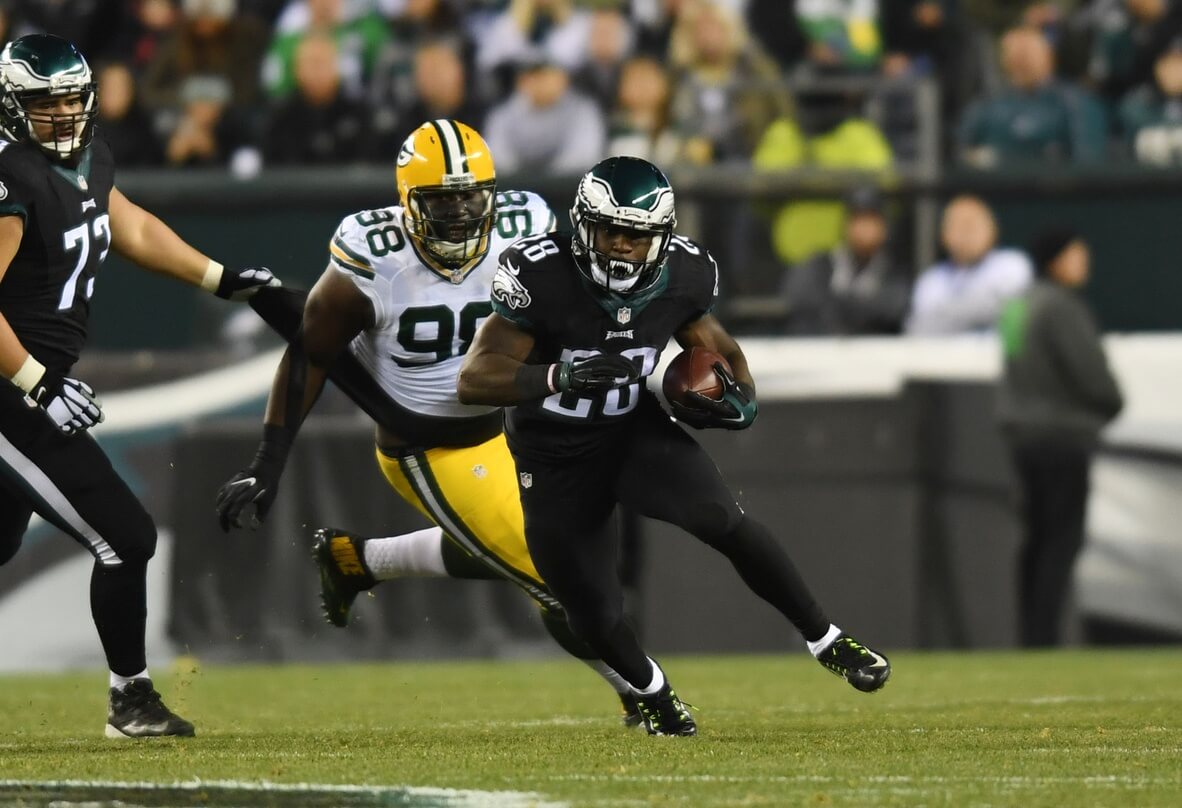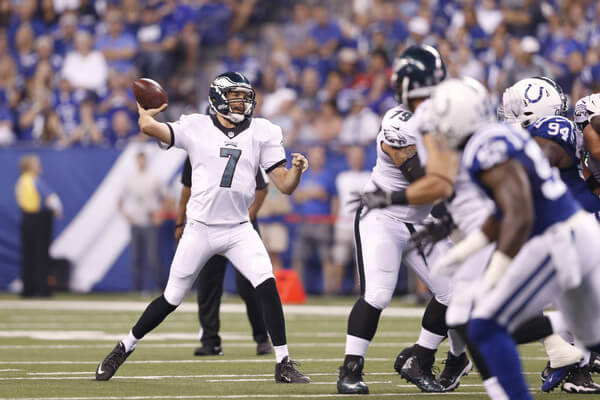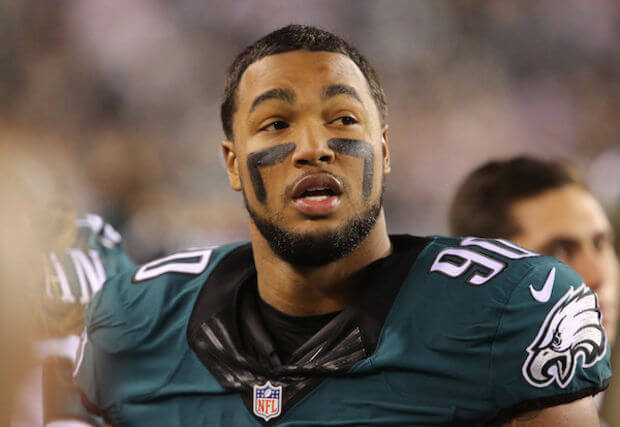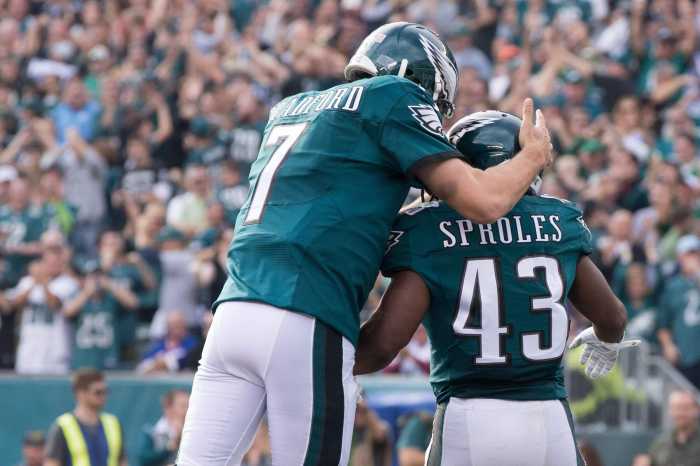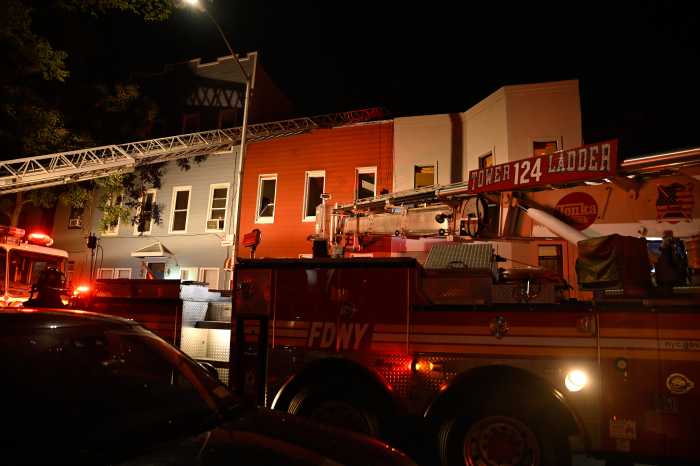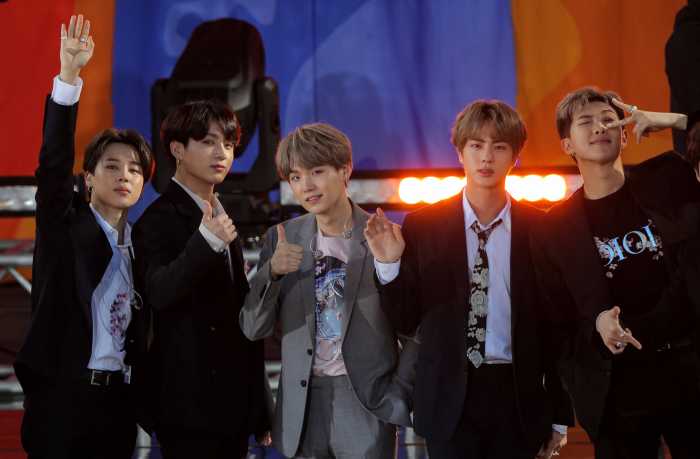Heading into the NFL Draft, running back was widely regarded as one of the Eagles biggest needs. Would they select Dalvin Cook in round one, or were they enamored with Christian McCaffrey? In the end, it was versatile SDSU standout, Donnel Pumphrey that heard his name called, before Corey Clement was signed by the team as an undrafted free agent.
With the NFL future of Ryan Mathews uncertain after a scary neck injury, there are plenty of question marks surrounding the Eagles backfield, but perhaps the most prominent of all is what happens to Wendell Smallwood?
The West Virginia product was drafted in the fifth round of last year’s NFL Draft and would go on to record 312 yards and a touchdown on 77 carries, before suffering an injury that would cut his rookie season short. At 5’10, 208 lbs, Smallwood’s size worked both for him and against him in the Eagles committee backfield. From a situational back, to a change-of-pace rusher, and even the leader of the pack at times, Smallwood experienced it all in 2016..but what did we learn, and what does 2017 have in store for “Small World”?
Vision:
One of the strengths I saw consistently in Smallwood’s game after re-watching every snap from last season, was his ball-carrier vision. While at times he seemed impatient, his ability to dissect unfolding situations and adjust his path accordingly was something that really helped him. As we can see in the play below, the pocket is pushed to the right, but a linebacker has his eyes kept on Smallwood. The rookie spots Kelce moving across to make the block, takes a step inside and then proceeds to burst through the new hole, trying to cut outside of an oncoming tackle.
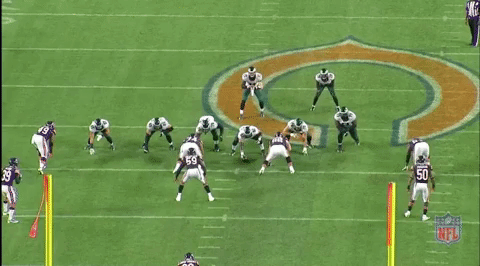
The same level of anticipation could be seen just one week later against the Steelers. Smallwood reads the block ahead of him from Trey Burton well and makes himself small to cut through a narrow window. His spin move is what really pops off the screen here, ad he immediately drives for extra yards..however, as we will learn later, it’s not always his greatest asset.

Between the tackles:
One of Smallwood’s biggest asset’s, is also one of his biggest setbacks at times. He’s an incredibly nifty back when running between tackles. With holes unpredictably opening and closing, Smallwood does a great job of using his size and elusiveness to fit through unscathed..just like we can see in the play below. A quick side step before darting inwards is almost barely visible at full speed, but if you watch closely, you can see how quickly he’s able to shift his body through that hole to avoid any kind of contact as he presses on to the next level.
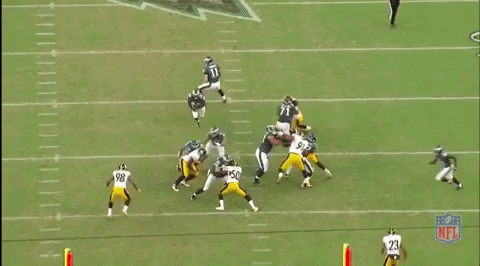
Although the most impressive part of this outside rush is Kelce’s run blocking, Smallwood does a great job once upfield, of pushing his way through a closing hole for some extra yards. He pushes his head down and leans forward through the narrowing window as he prepares for impact, making a big first down for the Eagles.
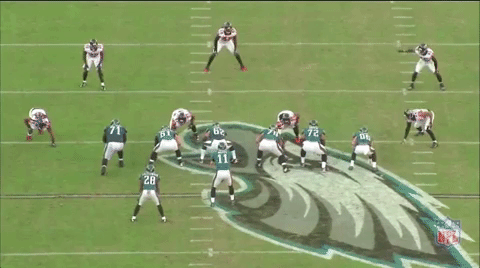
It’s that same ability to almost metaphorically shrink in the trenches, that saw him bounce into this hole against the Packers. Although the tackle is a little eyebrow raising as Smallwood attempts the splits, his ability to get to the second level with the pocket collapsing is impressive.
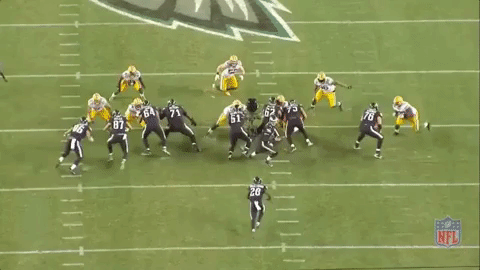
Is there a second gear?
The problem I find that stands out in Smallwood’s game is what happens after he’s burst through the trenches. There doesn’t appear to be a second-gear so to speak. Once Smallwood is at top-speed, that seems to be it..making one-on-one matchups a little too easy for defenders. Now I’m not expecting the WVU star to juke, spin, and jump over everybody..but his change in direction often appears to be too slow, allowing defenders to just stand there and pick him up as he runs near enough into them. It’s not the biggest problem in the world, as he still picks up big yards on these runs, but when you look at how Darren Sproles and Ryan Mathews are able to shed tackles in comparison, breaking ankles, changing gears and keeping Safeties on their toes, Smallwood seems limited in that area.

This may be my favorite Smallwood run of the season. A sneaky stiff arm that enables him break to the outside and very nearly get to the sideline, is followed with a quick cut and what actually looks like a human boost. This play says to me that Smallwood does have the turbo to turn on as he made Neiko Thorpe go the long way around, but he just doesn’t show it on a regular basis. Again though, Smallwood’s style is very simple, there isn’t a lot of flashy moves or jukes..it’s hit the hole, get out of the hole and push forward for extra yards. This isn’t a criticism as such, but Donnel Pumphrey brings THAT element of the game to the table.

However, Smallwood does bring the ability to bounce off tackles. He may not make many guys miss, but he will bounce off the tackle for extra yards. Below, we can see the infamous “Smallwood spin” again after a nice shifty push through the trenches, and the instinct of this to actually spin after the contact has been made is impressive..but risky if there was a heavy hit lying just around the corner..

The same can be seen here, Smallwood tries to spin after contact and as far as I’m aware, he’s only been able to keep going after a spin once so far..and there were four, maybe five attempts last season. It just feels as if at times that he’s trying to do a little too much with the ball and it can come back to haunt him.
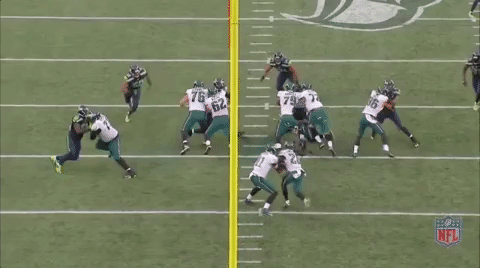
Ball security:
Many wondered why Smallwood wasn’t included more in Pederson’s offense. After a huge game against the Falcons and his first touchdown against the Steelers, fans were left pondering just what Smallwood has to do to see regular playing time. It’s no hidden fact that the Eagles run a multi-dimensional offense, and despite numerous attempts to get Smallwood involved in the passing game, he’s simply not a reliable passing option in screens and swings. Smallwood did catch 6 of 13 passes thrown his way last year..but of the 7 incompletions, it would be fair to say that most were errors on his part..like the drop below.
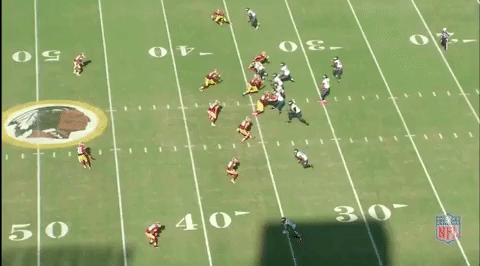
Or this one…
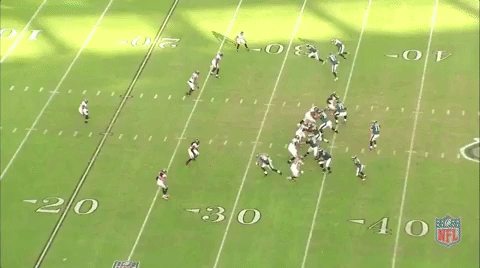
Or this one..
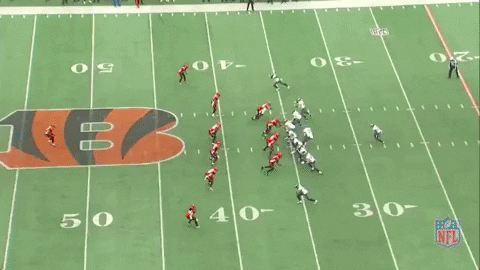
And then of course, there was the infamous late fumble against Dallas on his first carry of the game. I can’t tell if the fumble was simply a fluke, or whether the drops all season long were perhaps a premonition. Smallwood’s style means that the hits delivered to him often knock him off of his upright stance and could potentially jar the ball loose. Maybe he’s a more secure ball carrier than we think, I mean, he fumbled far less frequently than Ryan Mathews after all..
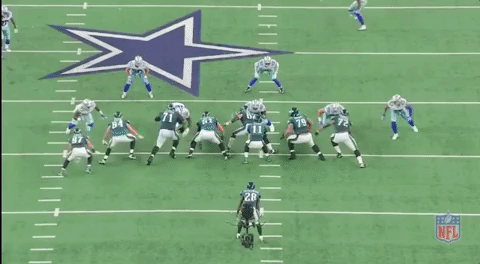
Regardless, it’s clear that Smallwood is not Darren Sproles or Donnel Pumphrey..and that’s where the questions arise.
Conclusion:
Smallwood isn’t a bad running back at all, in fact, his rookie season was relatively impressive. The problem is that in the committee effort that the Eagles are pining for, Smallwood doesn’t bring any overwhelming strength to the table. Darren Sproles and Donnel Pumphrey bring versatility and sheer explosiveness, while Corey Clement could potentially bring that workhorse mentality..and if Ryan Mathews does somehow remain on the roster, it’s even more congestion for Smallwood to try and navigate through.
A solid change-of-pace-back may be the role that Smallwood sees placed on his shoulders next year, allowing a three-down back to take the reins, while Smallwood picks apart worn down Defenses and punches it up the gut in a completely different fashion to the other backs on the roster.
Mandatory Credit: James Lang-USA TODAY Sports

